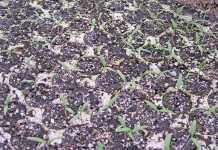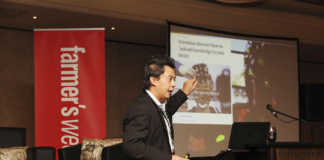Using drones or unmanned aerial vehicles (UAVs) as crop dusters or seeders may be new to many South African farmers, but UAVs have been used in this capacity in Japan since 1980.
Initially, small UAVs were used to spray rice paddies. Now unmanned helicopters are routinely used to spray wheat, oats, soya beans, lotus roots, daikon radishes and chestnut groves, with more and more crops added to the list all of the time. The Yamaha RMAX crop-dusting unmanned helicopter recently received the first Federal Aviation Administration waiver for full commercial operations across the US.
“Technically speaking, the RMAX is not a drone, at least in the sense that many think of them,” says Sean Gallagher, IT editor at Ars Technica. Rather, it is a giant remote control helicopter controlled by a pilot within line of sight, he explains. It weighs about 65kg and can carry approximately 30kg of liquid spray or granules for crop dusting. The craft is powered by a 16kW two-stroke engine, “essentially a riding lawnmower engine”.
A proven concept
RMAX aircraft are today responsible for spraying about 40% of Japan’s rice crop and have logged more than two million flight hours in total – hardly an experimental aircraft.
More accurate than a tractor
According to the website buzzfeed.com: “Drones are capable of spraying crops with more precision than a traditional tractor, which reduces costs, and potential pesticide exposure to workers who might have otherwise sprayed the crops.”
At the time of writing, the website uavcropdusters.com had 11 precision UAV crop dusters available for sale. One, the AG-V8A Octo-Copter Sprayer, can cover about 400ha in less than 30 hours, with a coverage rate of 13,4 ha/hour.
Autopilot
A large number of drones are completely autonomous: farmers can enter GPS co-ordinates into its software before spraying, and the drone will do the rest. Farmers wanting to eradicate invader species can do so cost-effectively through drone technology.
Watch footage of a RMAX chopper being used in a Napa, California, vineyard.
Source: UCDavis YouTube Page










